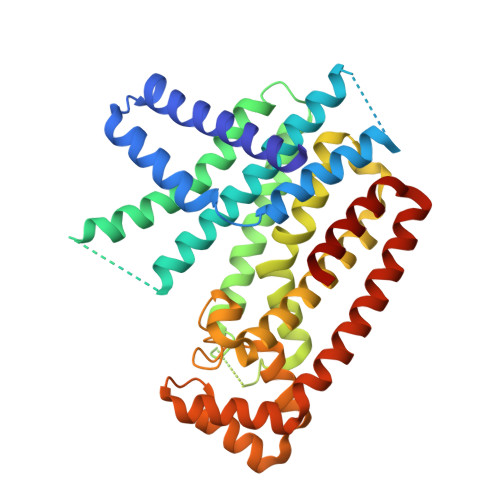Fragment-Based Discovery of Non-bisphosphonate Binders of Trypanosoma brucei Farnesyl Pyrophosphate Synthase.
Munzker, L., Petrick, J.K., Schleberger, C., Clavel, D., Cornaciu, I., Wilcken, R., Marquez, J.A., Klebe, G., Marzinzik, A., Jahnke, W.(2020) Chembiochem 21: 3096-3111
- PubMed: 32537808
- DOI: https://doi.org/10.1002/cbic.202000246
- Primary Citation of Related Structures:
6R36 - PubMed Abstract:
Trypanosoma brucei is the causative agent of human African trypanosomiasis (HAT). Nitrogen-containing bisphosphonates, a current treatment for bone diseases, have been shown to block the growth of the T. brucei parasites by inhibiting farnesyl pyrophosphate synthase (FPPS); however, due to their poor pharmacokinetic properties, they are not well suited for antiparasitic therapy. Recently, an allosteric binding pocket was discovered on human FPPS, but its existence on trypanosomal FPPS was unclear. We applied NMR and X-ray fragment screening to T. brucei FPPS and report herein on four fragments bound to this previously unknown allosteric site. Surprisingly, non-bisphosphonate active-site binders were also identified. Moreover, fragment screening revealed a number of additional binding sites. In an early structure-activity relationship (SAR) study, an analogue of an active-site binder was unexpectedly shown to bind to the allosteric site. Overlaying identified fragment binders of a parallel T. cruzi FPPS fragment screen with the T. brucei FPPS structure, and medicinal chemistry optimisation based on two binders revealed another example of fragment "pocket hopping". The discovery of binders with new chemotypes sets the framework for developing advanced compounds with pharmacokinetic properties suitable for the treatment of parasitic infections by inhibition of FPPS in T. brucei parasites.
Organizational Affiliation:
Novartis Institutes for Biomedical Research Novartis Campus, 4002, Basel, Switzerland.
















